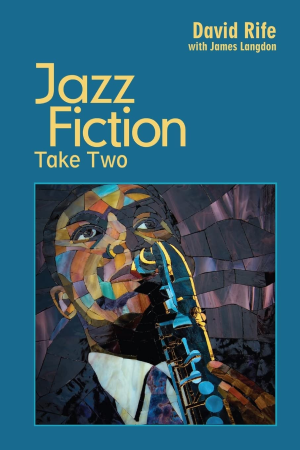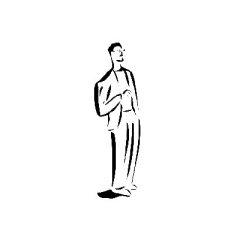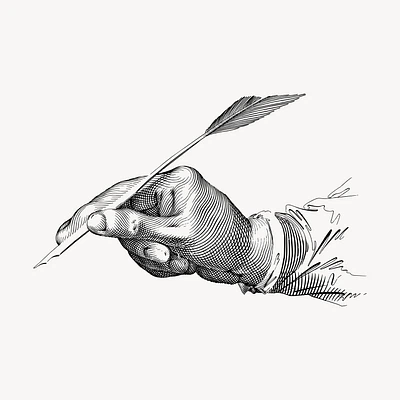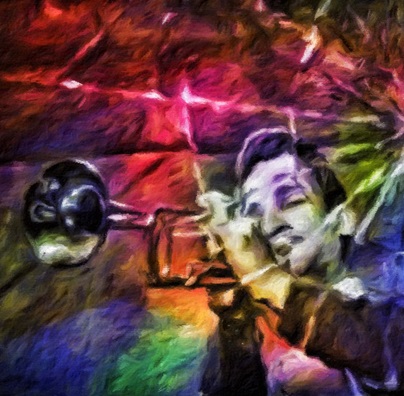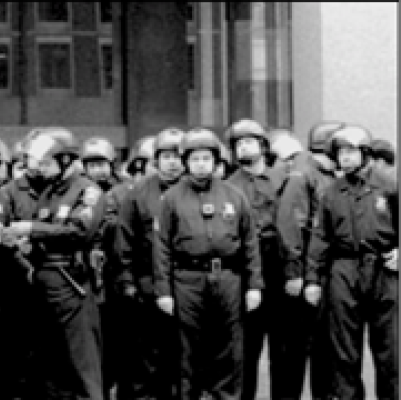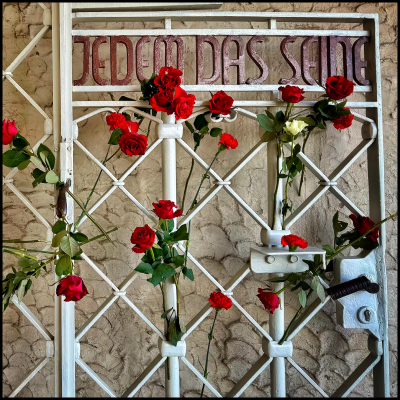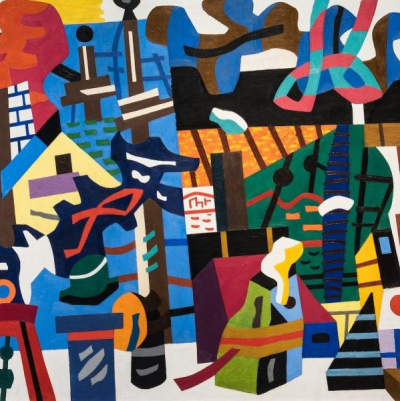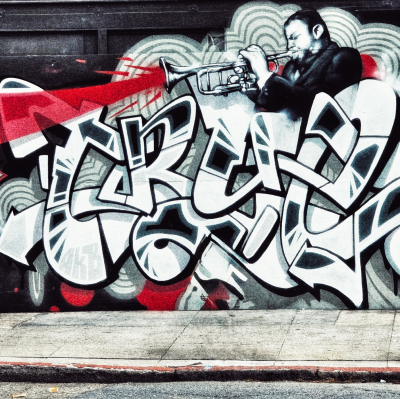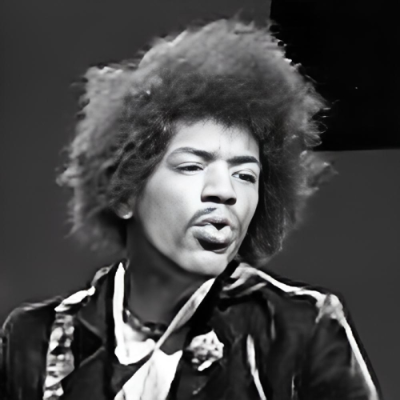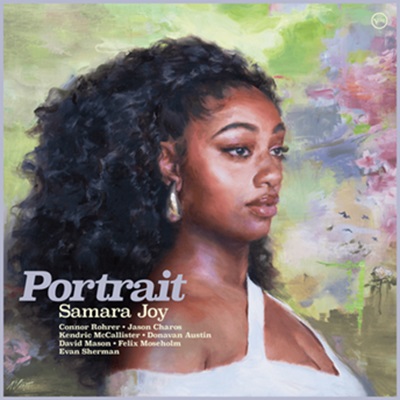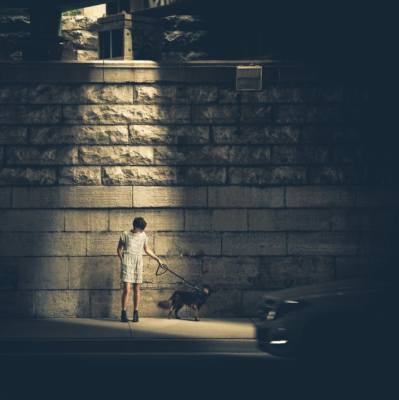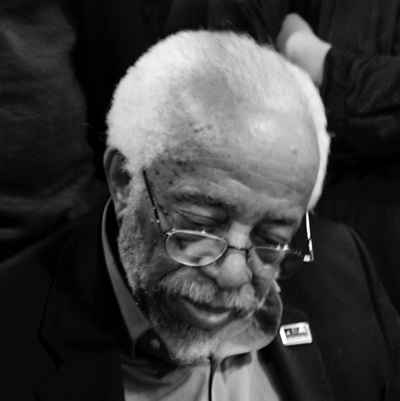.
.
For over twenty years, publishing quality jazz-themed fiction has been a mission of Jerry Jazz Musician. Hundreds of short stories have appeared on the pages of this website, most all of which can be accessed by clicking here.
A substantial number of novels and stories with jazz music as a component of the story have been published over the years, and the scholar David J. Rife has written short essay/reviews of them, which he has compiled in two valuable resources, Jazz Fiction: A History and Comprehensive Reader’s Guide (2008), and a recently published sequel, Jazz Fiction: Take Two. (Several of the stories published on Jerry Jazz Musician are reviewed).
Rife’s work is impressive and worth sharing with Jerry Jazz Musician readers. With his cooperation, essay/review excerpts from Take Two will be published on a regular basis.
.
In this edition, Rife writes about four novels/short fiction that include stories involving Louis Armstrong.
.
.
___
.
.
.
…..Jazz Fiction: Take Two is the sequel to Jazz Fiction: A History and Comprehensive Reader’s Guide (2008). The earlier work filled a pressing need in jazz studies by identifying and discussing 700 works of fiction with a jazz component.
…..This work picks up where that one left off, around the turn of the 21st century, and surveys over 500 works of jazz-inflected fiction that have appeared since. None of these works, to my knowledge, have been discussed in this context.
…..The essay-reviews at the center of the book are designed to give readers a sense of the plots of the works in question and to characterize their debt to jazz. The entries were written with both the general reader and the scholar in mind and are intended to entertain as well as inform. This alone should qualify Jazz Fiction: Take Two as an unusual and useful reference resource.
.
-David J. Rife
.
.
___
.
.
photo by William Gottlieb/Library of Congress
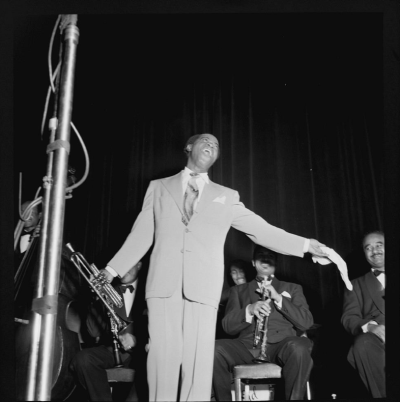
Louis Armstrong in Carnegie Hall, New York
c. 1947
.
…..Ebullient stage presence, jaw-dropping innovative expertise, and likely the most influential jazz instrumentalist (and pop vocalist) of the five decades of his career and the half century after his death in 1971: These are but a few of the distinctions that have long characterized America’s first world ambassador of jazz. I doubt that a single work of nonfiction or fiction could ever capture Louis Armstrong’s complexity – but the following entries will at least provide the reader with a useful starting point for a biographical amalgam. [The most extensive portrait of Armstrong-as-character—soloist and assistant detective—occurs in Ray Celestin’s tetralogy, Sunset Blues Quartet (2022). I discuss the first two of these novels in my book.]
.
.
___
.
..
…..A coming-of-age story aimed at a teenage audience focusing on the friendship between 12-year-old Fred Bradley and his neighbor in Corona, Queens in 1959, Louis Armstrong. Fred is encouraged on the trumpet by his much older mentor and introduced to the Village Vanguard and several of Armstrong’s fellow musicians and close friends; Langston Hughes, Dizzy Gillespie, and Duke Ellington make memorable cameo appearances. Little Fred is also exposed to racism, foreign travel, and the challenges of improvisatory music. Thanks to all the generous-spirited adults Fred meets, he can look forward to a promising future.
.
.
_____
.
.
…
…..It’s a stifling hot summer in 1928. Chicago is overflowing with illegal booze, dope, violence, gangsterism, and unbridled political corruption, all connected in some way to the city’s unavowed syphilitic king, “Scarface” Al Capone. But it’s also a city bursting with vibrancy and excitement. Industrial growth is everywhere and so is prosperity. All of these elements combine to invigorate the three overlapping plots that provide the architecture of this deeply researched historical crime novel: a white gangster’s mutilated corpse is discovered in the wrong part of town; a gathering of civic leaders is poisoned at an opulent new hotel; and a young heiress goes missing without a trace.
…..The girl’s mother then offers two Pinkerton detectives a handsome reward to find her daughter. Like Louis Armstrong, the detectives—Michael Talbot and Ida Davis—have come north from New Orleans where all three knew each other. Jazz has also come north, thanks to Armstrong and others. And it has, according to the epigraph from Leopold Stokowski, “come to stay because it is an expression of the times, of the breathless, energetic, superactive times in which we are living” (1924).
…..The first sentence of the book depicts Armstrong running to catch a train, cornet case in hand. After establishing himself as a musician with chops and personality, he is asked by Ida to help her in the case of the missing heiress. Although Ida is Creole, she’s too light to function comfortably in the Black community, so she calls on Armstrong to help her find clues in Bronzeville. [Digression: It’s amusing to compare this picture of Armstrong with the equally extensive one in Roddy Doyle’s Oh, Play That Thing where he spends much of his time as a second-story man robbing houses after dark.] Armstrong is also shown in performance, in one memorable scene with a white player:
Then Beiderbecke began his solo, starting out slow, coasting against the rhythm, then moving back into it, and as Ida listened she realized he wasn’t trying to outdo Louis, he was simply finding his own way, and as he got into it, the crowd did, too. And the notes came faster, bounding out of the cornet, punchy and clear, rolling on to a finale in an unflappable cascade of precision.
…..There are also a couple of rich scenes of Armstrong and the Hot Five during recording sessions, culminating in the group’s masterpiece, “West End Blues.” But there are also passages describing how the whites exploited the Blacks by stealing their ideas and even their music and marketing them as their own.
.
.
_____
.
.
…..Short-listed for the Man Booker Prize and winner of the Scotiabank Giller Prize, this nonlinear novel shuttles from Nazi-occupied Germany and Paris to modern-day Baltimore and rural Poland. Its octogenarian narrator, Sid, tells the tense, complicated story of a group of marginalized musicians trying to scratch out an existence in Europe during the tumultuous period leading up to the Second World War. After achieving popularity in Berlin, the Hot Time Swingers are forbidden by the Nazis to play their music, and so at great risk and through the encouragement of Louis Armstrong, they make their way to Paris, reluctantly leaving behind their Jewish pianist who—of course—has been denied papers. (Three of the principals in the novel are “half-breeds” —Mischlings—and one is a Jew, underscoring the tension in a time of “racial purity.”)
…..Armstrong had urged the group to recongregate in Paris because of their prodigiously gifted trumpeter Hieronymous Falk. Tension becomes palpable as the band attempts to produce a perfect jazz recording of a popular Nazi-resistance song. Before they can put their plan to work, Falk is incarcerated and the other band members run for their lives. Nobody knew that Sid had saved and secreted the last take of “Half-Blood Blues,” causing the record to become so legendary that a documentary film is made of Falk’s life. This happens 50 years after the fact; now, in 1992, Sid and his fellow Baltimorean bandmate, Chip, are invited to return to Berlin for the opening of the film celebrating Falk. After they get there, we learn that earlier events had not been at all as they seemed; in fact, since Sid is likely an unreliable storyteller, we’re left with questions that the book doesn’t allow us to answer. This novel employs (and occasionally overuses) jazz vernacular, depicts musicians at work under extremely trying conditions, and provides a satisfying (but unfortunately truncated) portrait of Armstrong. Here is Sid upon seeing the great jazzman for the first time:
A man ain’t never seen greatness till he set his eyes on the likes of Armstrong. That the truth. Those hooded lids, that blinding smile: the jack was immense, majestic. But something else, too: he looked brutally human, like he known suffering on its own terms. His mouth was shocking. He done wrecked his chops from the pressure of hitting them high notes over the years. His bottom lip hung slightly open, like a drawer of red velvets. He lift a handkerchief to his mouth, wipe off a line of spittle. I seen something in him then: a sort of devastated patience, a awful tiredness. I known that look. My mama had it all her life.
…..In its dramatization of jazz artists in Nazi Germany at the outbreak of WW2, this novel joins John A. Williams’ Clifford’s Blues (Minneapolis: Coffee House, 1998) and Tomas Böhm’s The Vienna Jazz Trio (Charlottesville: Pitchstone, 2010).
.
.
_____
.
.
……..Thirteen-year-old Andre is an intellectual and musical prodigy who is a selective mute, that is, a person whose silence has a psychological rather than a physiological origin. Andre never goes anywhere without his trumpet: it’s his key to the happiness that creates happiness in others. This idea, conscious or otherwise, derives from his total devotion to his hero Louis Armstrong. Andre has read and absorbed everything he could find about the great musician. Both came from the same New Orleans neighborhood, experienced traumatic daddy issues, became waifs, and embraced music for solace. Andre is so preoccupied with Armstrong that he seems at times to become him. When he reflects about the relationship between music and life, the reader has to pause to figure out whether we’re in Andre’s or Armstrong’s mind. Andre’s beloved dad is shot dead in front of Andre early in the book, setting in motion an investigation of the crime to which Andre is the sole witness. As the investigation proceeds, we begin to suspect that there might be a connection between Andre’s speechlessness and his father’s death. The novel has a gratifying (if fantastical) ending, and if it has few descriptions of jazz in the making, it is nevertheless worth reading for its jazz content, especially the speculations about Armstrong’s musical philosophy.
.
___
.
.
Click here to read previous editions of excerpts from David J. Rife’s Jazz Fiction: Take Two
.
.
Click here to read “Ballad,” Lúcia Leão’s winning story in the 65th Jerry Jazz Musician Short Fiction Contest
Click here to read more short fiction published on Jerry Jazz Musician
Click here to read The Sunday Poem
Click here for information about how to submit your poetry or short fiction
Click here for details about the upcoming 67th Jerry Jazz Musician Short Fiction Contest
Click here to subscribe to the Jerry Jazz Musician quarterly newsletter (it’s free)
.
Click here to help support the continuing publication of Jerry Jazz Musician, and to keep it ad and commercial-free (thank you!)
.
.
___
.
.
Jerry Jazz Musician…human produced (and AI-free) since 1999
.
.
.




